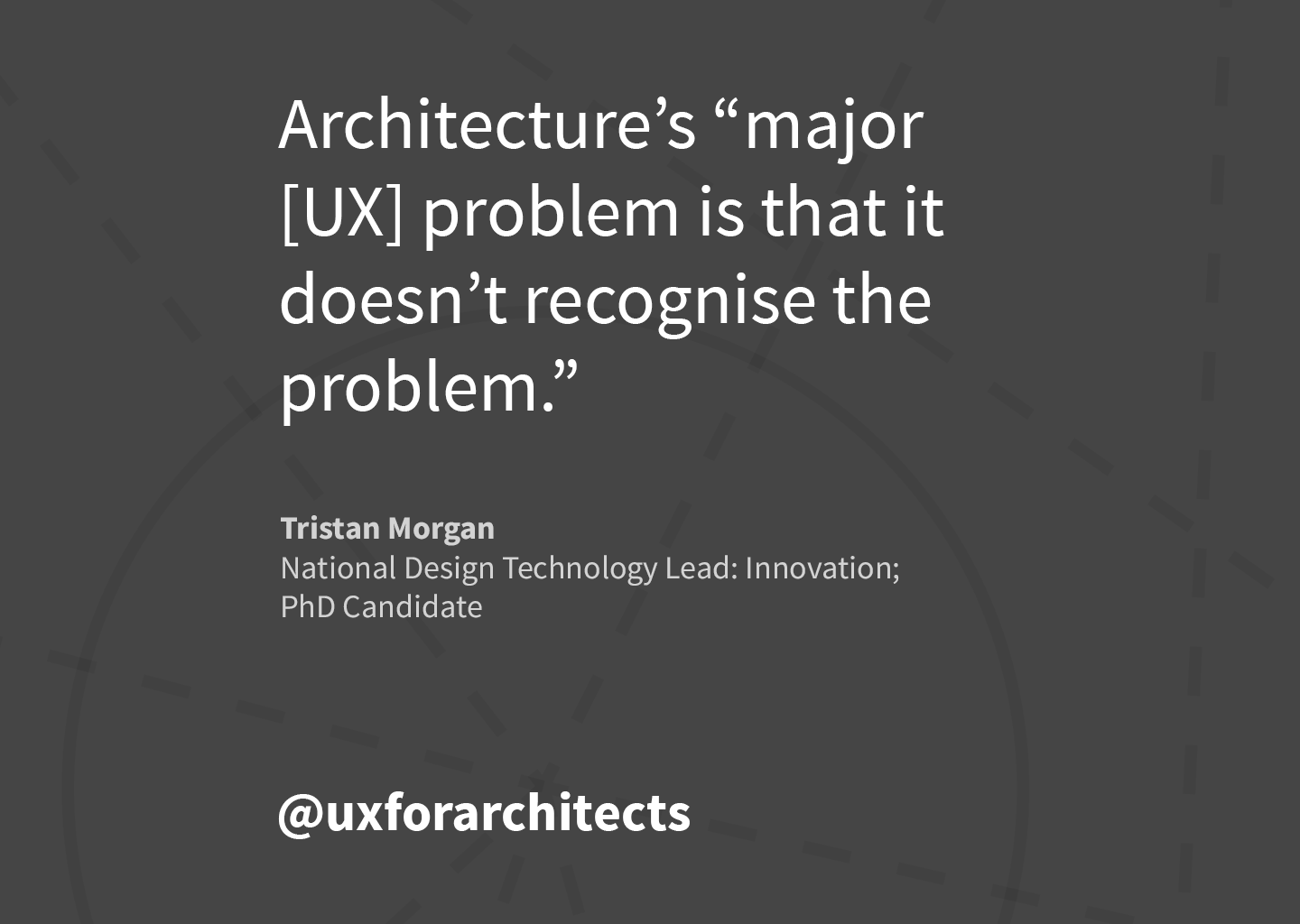UX for Architects is resonating as I flounder around connecting abstract ideas with real-world discussion and research. There’s precious little information online, and in this early stage, the conversations I’m having with AEC professionals are invaluable!
I recently met with Tristan Morgan, National Design Technology Lead: Innovation at COX Architecture and PhD Candidate at the University of Western Australia. Tristan’s work in computational design in Architecture gives him first-hand insight into the AEC/UX problem in both practice and practicality. As we got talking about Architecture’s UX problem, he generously offered to answer a few of my initial questions to help frame the avenues UX for Architects will investigate.
As you see it, what is Architecture’s UX problem?
Tristan Morgan: Its major problem is that it doesn’t recognise the problem. Much of the language of architecture and architects revolves around ‘experience’ and the ‘end-user’ but is often couched in qualitative and ‘ineffable’ spheres of knowing. UX itself is such a broad space and has recently emerged as significant in architecture due to the proliferation of new design tools that enable the integration of previously disconnected fields of expertise and understanding. In context this isn’t surprising – main-stream architectural practice has only recently adopted computer-aided design as an essential medium, let alone computational design!
Are our current design/build practices well-positioned for addressing this problem? Why?
TM: Currently, no. Trajectories suggest yes, but not broadly. More diversity in practice is important, as is the transition from ‘tinkerers’ into ‘experts’. This is likely to happen not via training, but via recruiting and expanding the definition of ‘architectural practice’. The more comfortable we get with data, the easier the move towards authentic user experience research will become.
Are post-occupancy studies enough? Why?
TM: No – not in their current form. Most of them track the building, rather than the occupants, and where they do both do not test against assumptions or feed results back into models to assist better design.
The AEC Industry appears to be craving a UX breakthrough. What do you think architects can do to make it happen?
TM: Do more research, broaden their knowledge base, seek advice. Ultimately, UX is about better communication, all the way from conception, design, documentation through to construction and occupancy. As with other aspects of building that are considered non-negotiable, user experience should become integral to practice. I think our current and emerging technologies position architects quite well for integrating UX thinking into design, due to the adoption of data and evidence-driven design, as well as an acknowledgement of the importance of user-centric and empathic spaces. The next generation of practitioners will likely be familiar with the impact of UX, particularly as they grapple with issues of communicating complex ideas and solutions to non-experts (their bosses) and are driven to spend as much time designing interfaces (software and physical) as they are solutions or workflows.
Tristan’s words confirm my inkling that a bright future does lay ahead for Architecture, so long as it embraces adaptability and change – as anything that wants to live must do. Change is inevitable. What do you think? How would you have answered my questions, or what would you ask?
Further reading
“It’s time for architects to choose ethics over aesthetics”, Christine Murray, Dezeen, 28 March 2019

